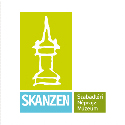Museum, Library and Archives of Hungarian Circus Arts
Museum, Library and Archives of Hungarian Circus Arts: REDANCE UKRAINE
The pilot project, which is related to the traditional Ukrainian folk dance treasure, processes it and connects it with our present, consisted of non-verbal community practices based on participation, cooperation and empowerment, joint dance workshops, creative movement tasks, contemporary combinations of these, and finally a group dance performance held as a public program for the general public at the Budapest Grand Circus.
The preparatory phase included a project launch workshop and two dance workshops, the next phase included four creative dance workshops led by Kámea Farkas and with the participation of dance pedagogue Olena Knobloch, and dance artists Gulnara Szavenko and Szvitlana Momot, and finally the closing event held within the framework of the ArtistaCafé was preceded by two rehearsals and a dance performance presentation and video recording held in front of a spontaneous audience in the City Park in Budapest.
The target group of the pilot project was children, young people, dancers and dance artists who had fled from Ukraine and were under the protection of the National Circus Arts Center. 18 people took part in the pilot project: two refugee dancers from Ukraine (Gulnara Savenkot and Svitlana Momot), four circus dancers from college, 12 children and young artists and dance students, 2 Hungarian circus dancers from college, and the Ukrainian choir Spiv.Ochi also participated in the closing event. The National Circus Arts Center / Metropolitan Circus Dance Company and the Budapest Circus Arts and Contemporary Dance College participated as cooperating partners.
The pilot project focused on traditional Ukrainian folk dances (e.g. the Hutsul Arkan round dance included in the national register or the Serben, which is a ritual men's dance), the language of movement and their survival in contemporary culture. The project participants got to know traditional Ukrainian dances in turn, as well as some Hungarian folk dances, which provided an opportunity for dance dialogue and creative solutions. We basically dealt with the acquisition and rethinking of traditional Ukrainian folk dances: "Плескач" (Pleszkács), Аркан" (Árkán), "Коломийка" (Kolomijka), "Гопак" (Hopák), "Aгир ава ве Кайтарма" (Agir ava ve Kajtarma), "Слобожанська полька" (Szlobozsanska polka), "Подоляночкa" (Podoljánocska).
The pedagogical methodological basis of the pilot project was participation, cooperation, empowerment, non-hierarchy, learning from each other, art pedagogical methods, consideration of different perspectives, flexibility, adaptation to each other, the use of diverse working forms, practicality, non-verbality, reciprocity, dialogue, openness, creativity, motivation, positive reinforcement, gradualness and facilitation.
The uniqueness of the pilot project was the large-scale joint circus dance performance that concluded the work, which had a truly motivating effect on the participants involved.
Adaptation:
The generally applicable methodology is supported by a museum pedagogical educational film and methodological description in 3 languages (Hungarian, Ukrainian, English). The methodology, which can be adapted based on the implemented pilot project, contains a museum element, a museum pedagogical element, and a public education and leisure community element. The adaptation is aided by a detailed description of the process steps, a presentation of how the elements build on each other, and the list of emerging difficulties and obstacles is supplemented by solution proposals and specific examples from the implemented project practice.
The implementers of the pilot project demonstrated how the cultural heritage of refugees from Ukraine can be connected to any museum collection and knowledge, and how the staff community, the museum audience, and the refugee community can be sensitized to each other through museum pedagogical processes, in the interests of mutual acceptance and community-based cooperation.
Feedback of the participants:
The pilot project can be considered a clear success based on the responses of the participating Ukrainian refugees to the satisfaction questionnaire:
“It was a pleasant surprise for me to see that Ukrainian dance brought Hungarian and Ukrainian youth together.”
“It was a joy to see the synthesis of folk dance and circus art.”
“I got to know Arkan and the Szlobozsan polka better.”
“It was interesting for me to see Ukrainian folk dance combined with modern dance styles.”





